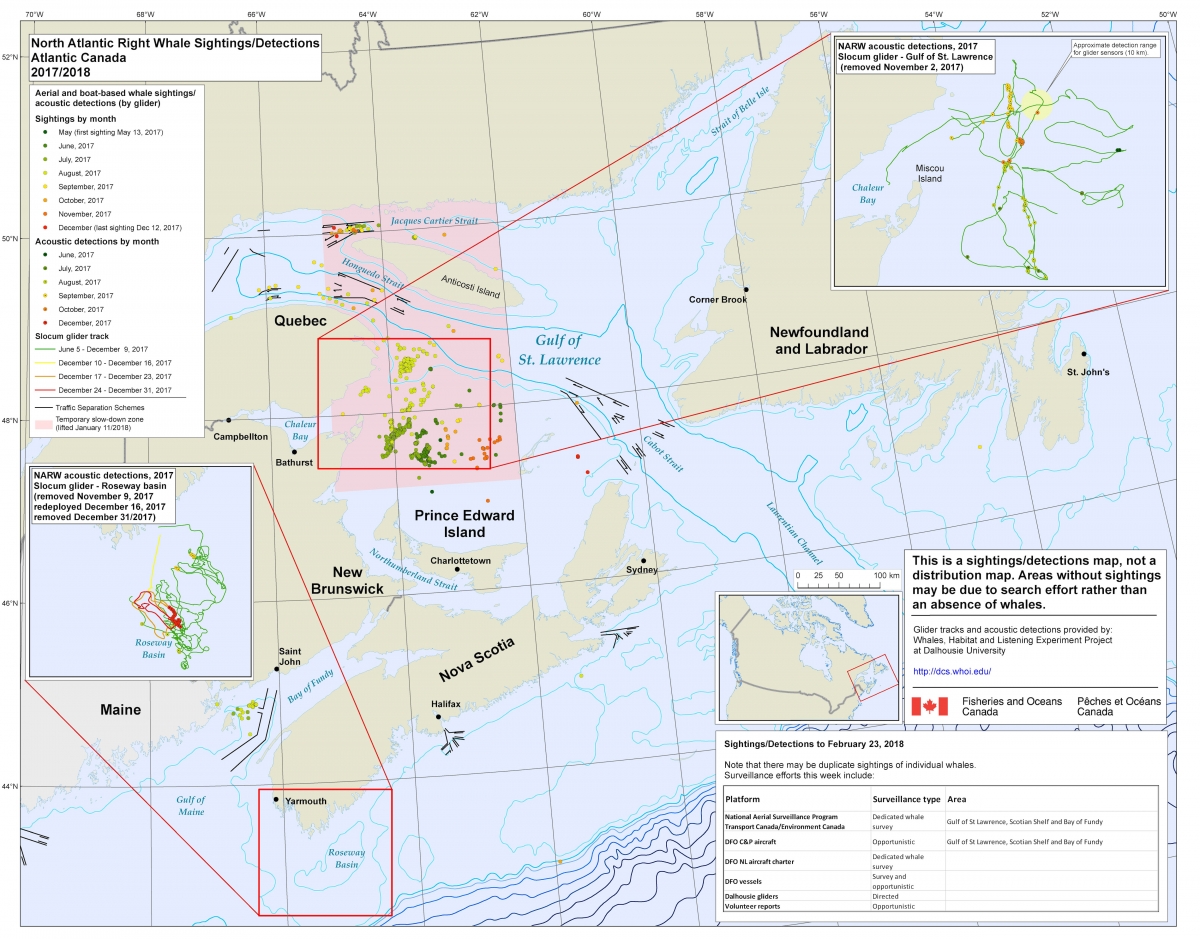When Things Go Wrong for Right Whales
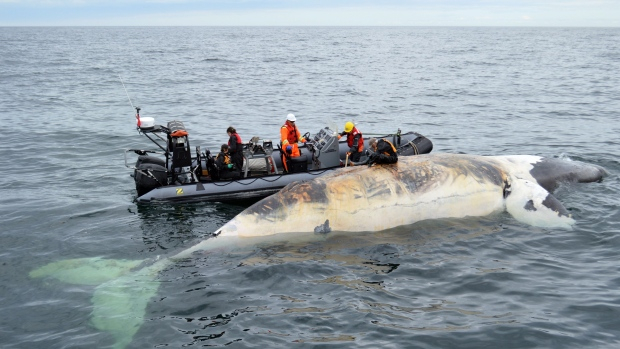
Guest blog written by Environmental Visual Communication student Viridiana Jimenez.
Right whales were featured heavily in the news throughout the latter half of 2017, unfortunately for dire reasons. In 2017, seventeen dead whales were discovered, twelve right whales were found in the Gulf of St Lawrence and five others were recorded in US waters. We have barely started a new year, and already the first right whale death has been reported in the USA—a ten year old female last seen in the Gulf of St. Lawrence. Necropsy reports have determined that the causes of death for these animals was primarily ship collisions and entanglements with fishing gear. For a species that was hunted to near extinction during the whaling era and whose latest population estimate stood at 451 individuals in 2016; the death of these seventeen whales represents a loss of over 3% of the population all within a mere four months.
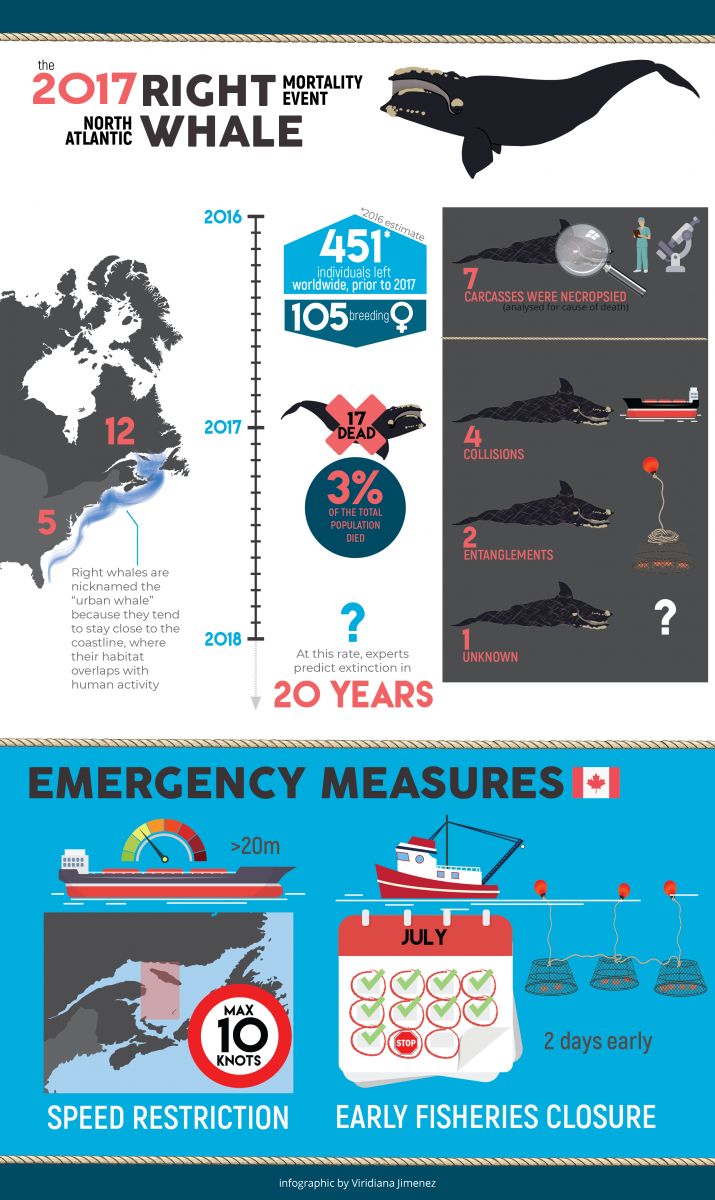
The significance of this loss has sent the scientific community into a panic. Mark Baumgartner of Woods Hole Oceanographic Institution has predicted that at the current rate these breeding females will disappear within two decades, meaning that if nothing changes, the population could be condemned to extinction by 2038. Christian Ramp of the Mingan Island Cetacean Study (MICS) explains that a female must essentially replace herself within the population to ensure the viability of the species, and this is not happening right now. “They now die quicker than they reproduce. [In 2017] we didn’t see a single cow-calf pair in the St. Lawrence”, says Ramp.
Not only are right whales dying, we are further reducing their reproductive rate through ship strikes and entanglements via fishing gear. For the females who survive entanglements, they still need time to recover, which results in lower reproductive abilities and success. This may be one of the underlying reasons why there is an absence of calves this year—a first since surveys of right whale calving grounds began in the 1980s; amplifying the gravity of the right whales’ already precarious situation.
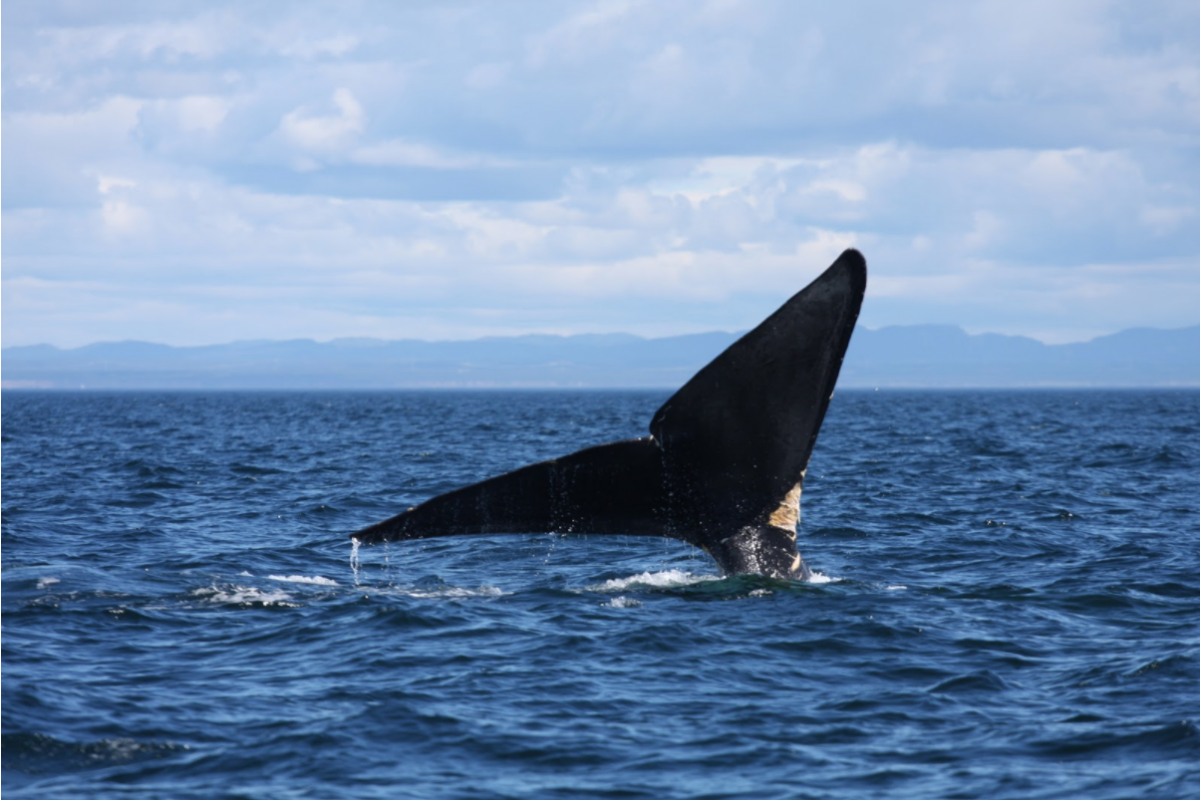
The North Atlantic right whale is an endangered species that is listed under the Species at Risk Act (SARA). This means that Canada has a ‘duty’ to put in place measures to protect our whales from harm and to support their recovery. In keeping with its conservation commitments, the Department for Fisheries and Oceans (DFO) and Transport Canada, took legislative actions in the summer of 2017, following a statement from DFO Minister Dominic Leblanc, “We’ll do what we have to do, to ensure not only the protection of North Atlantic right whales, but also the recovery of this species as well”.
One thing that has aggravated the problem is the right whales’ recent shift in distribution. There has been a notable increase in whale numbers within the Gulf of St. Lawrence since 2015, with a peak in 2016. This is a shift away from their usual summer feeding grounds in the Bay of Fundy. Climate change may be the driving force behind this shift. “We know that more warm water gets into the Cabot strait from the Gulf stream” says Ramp. This is likely to impact the right whales’ primary food source: Calanus, a small species of zooplankton. “Calanus is a cold-water species. If the water warms up, they move north.”
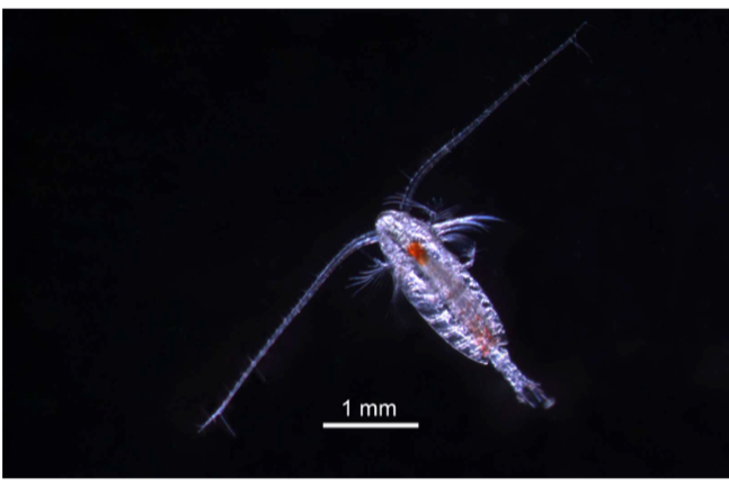
Collisions with ship traffic have been an ongoing problem with many species of large whales worldwide, especially right whale species because of their low profile at the surface and slow swimming speeds. Unfortunately, due to the high speed of ships travelling in the waters of the Gulf of St. Lawrence (up to 25 knots or 46km/h), most ship strikes are lethal. Actual mortality numbers are difficult to account for, as some carcasses float, while others sink to the bottom of the ocean.
Since the summer, multiple research organisations, in collaboration with DFO and Transport Canada, have been working in tandem to pool together information and propose solutions to this issue. “You have to find overlap between whales and the industry. And of course that is difficult because Canada has huge coastal waters.” says Ramp. The St. Lawrence river is one of Canada’s (and the planet’s) busiest areas in terms of maritime traffic. More whales moving into this high seas highway is already proving to be a deadly combination.
Responses from Industries Impacted by the Emergency Measures
The shipping industry initially met the 10 knott speed restriction that was imposed by DFO with resistance. Captain Sid Hynes, executive chairman of Oceanex, stated that “the impacts [of the speed restriction] would be huge financially as well as directly, because time is money.” In an interview with CTV News, Sonia Simard of the Shipping Federation of Canada, stated “If you add time to the voyage—time is of the essence for marine transportation—it would mean extra costs for the ship owners and it could eventually translate into extra costs for the goods”. Additionally, officials predicted a $2.5 million loss for the Gaspe region’s tourism industries—cruise ships cancelled some of their stops in the area to make up for time lost due to the speed restriction.The Shipping Federation of Canada has stated that they share the objective of reducing right whale-ship collisions, but are hoping for a more refined solution that will minimize regional and national economic impacts.
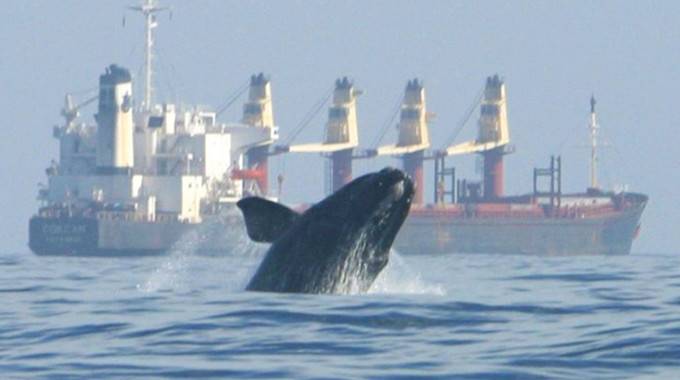
The effect of the federal government’s right whale emergency measures on the fishing industry had a less severe impact, as the fishing season was nearly over by the time the early closure was enforced. Due to the rate of right whale entanglements in fishing gear, there will be a strong focus on making equipment more “whale-friendly”. When prompted about new, modified fishing gear, a North Shore fisherman who wished to remain anonymous responded with a sceptical, albeit encouraging tone, outlining the difficulties and preoccupations he foresees with new gear, while “being open to experimenting with new gear if it can save the whales”.
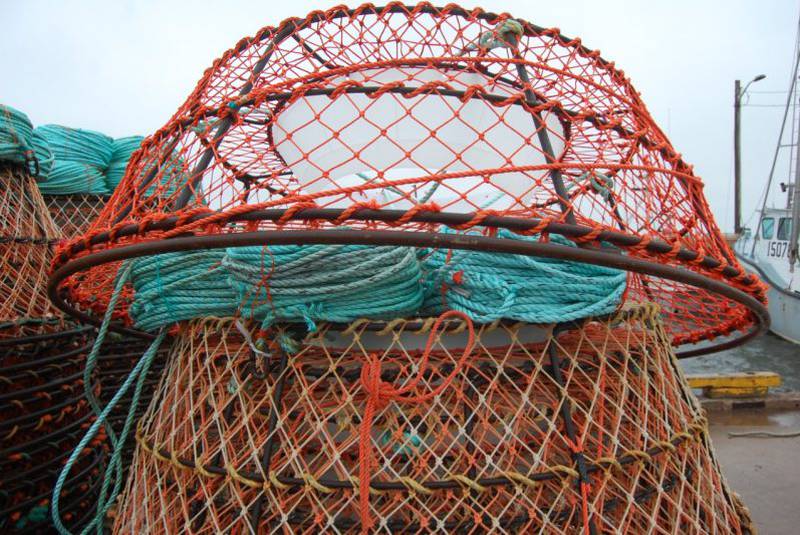
As we enter 2018, what actions are being taken to protect the North Atlantic right whale?
It certainly seems like both the shipping and fishing industries are inclined to collaborate to help reduce the loss of right whales. Bruce Burrows, President to the Chamber of Marine Commerce, said: “We’re pleased to see the speed restrictions lifted as our ship operator members continue winter deliveries of vital products to Canadian companies and northern communities. We are working in tandem with the scientific community and government officials over the winter to develop solutions based on strong science that both protect North Atlantic right whales and minimize economic impacts for all Canadians.”
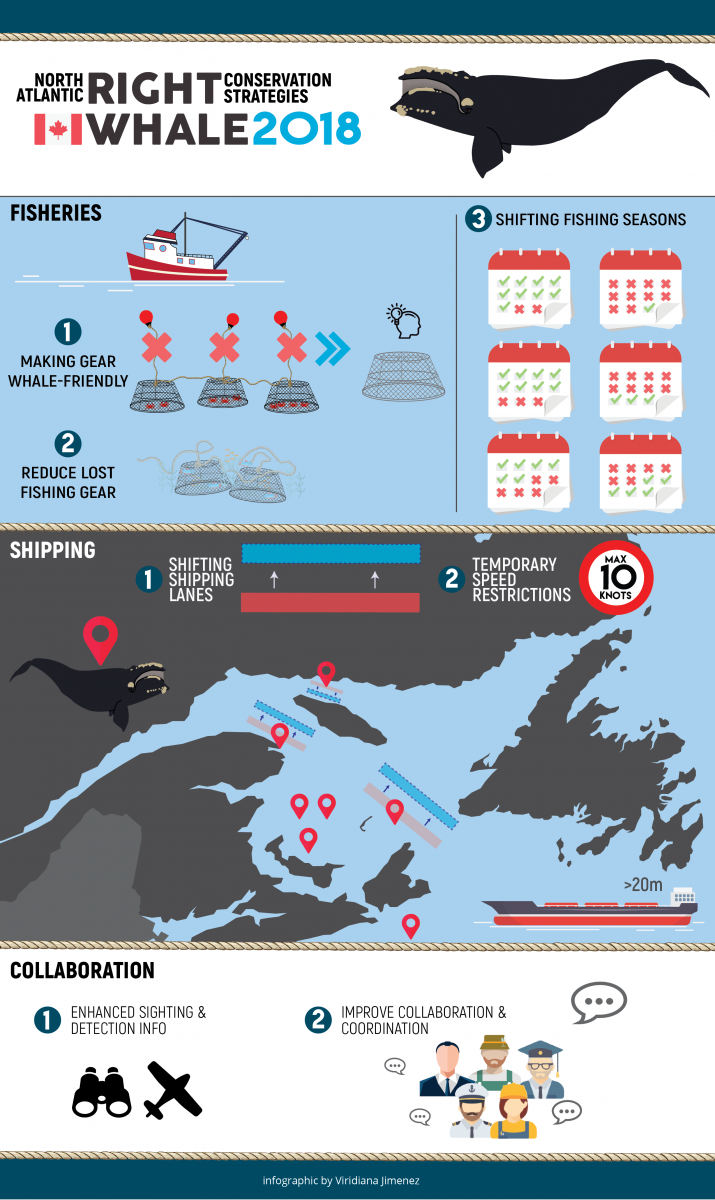
DFO continues to hold regular meetings focusing on right whale conservation and management. In addition to the federal actions and measures, a large group of stakeholders has been meeting as part of the North Atlantic Right Whale Consortium (NARWC). The Consortium, consisting of both non-governmental and governmental organisations and individuals, including scientists, conservationists, and representatives of the fishing and shipping industries, who were brought together to discuss the critical situation and to discuss further measures that need to be taken to ensure right whale recovery. “I think if we’re going to be successful for right whales we have to work with coexistence” states Moira Brown, right whale expert at the New England Aquarium and the Canadian Whale Institute. At the Consortium meeting in Halifax last October, she stated that she was “encouraged by the good response of both the fishing industry and the shipping industry to see how they can alter either their seasons, their timing, or their gear to reduce and prevent whale deaths”.
What role do we, the public, play in all this?
The right whale story has garnered much attention and support from the general public thanks to media coverage on all platforms including television, newspapers, and social media. Moira Brown believes that “[the public] has a role to play...There’s letter writing and emails to stay on top of the issues and help us by writing to politicians to let them know you’re interested, to let them know that it’s not just some researchers that are interested in this species, but that as a Canadian you’re interested in this species and I think that’s really important.”
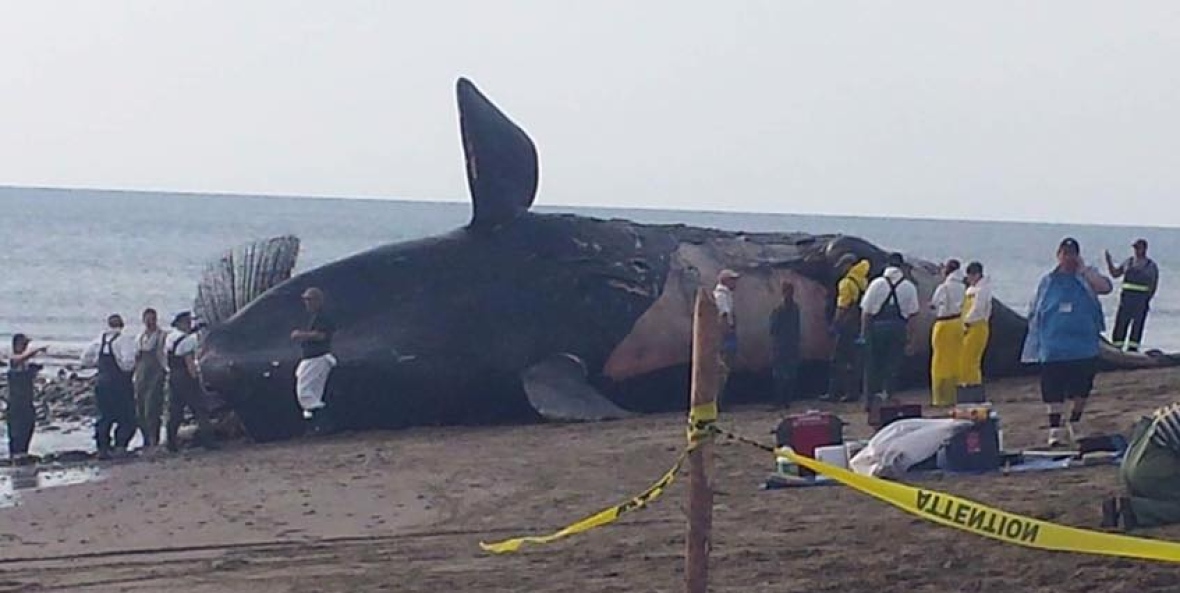
One way or another, Canada has huge stakes in saving the right whales. It is clear that collaboration between stakeholders is key, and most importantly, everyone has a role to play in ensuring that the North Atlantic right whales are not forgotten.
There is an ever-increasing awareness of the threats to our oceans. An Ocean Symposium was held at the Royal Ontario Museum in December 2017 that brought together some of DFO’s highest officials, representatives of Canada’s main marine research and conservation organisations, along with ocean users, storytellers, and Indigenous representatives to discuss the future of our oceans. Now it’s time to continue the ocean conversation.
For more information and updates on right whales, visit the Department of Fisheries and Oceans (DFO) website.
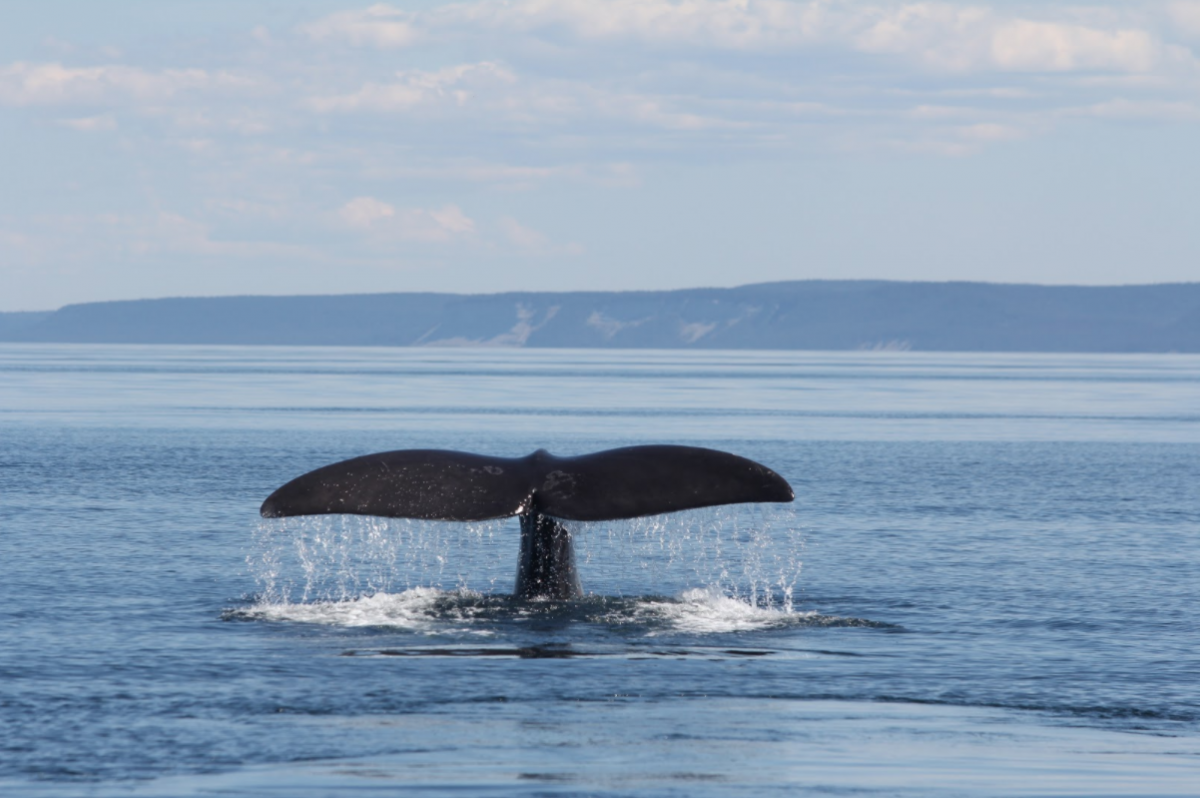
To view stunning images of whales and other wild animals from across the globe, visit The Wildlife Photographer of the Year Exhibition at the ROM, on until March 18, 2018.

